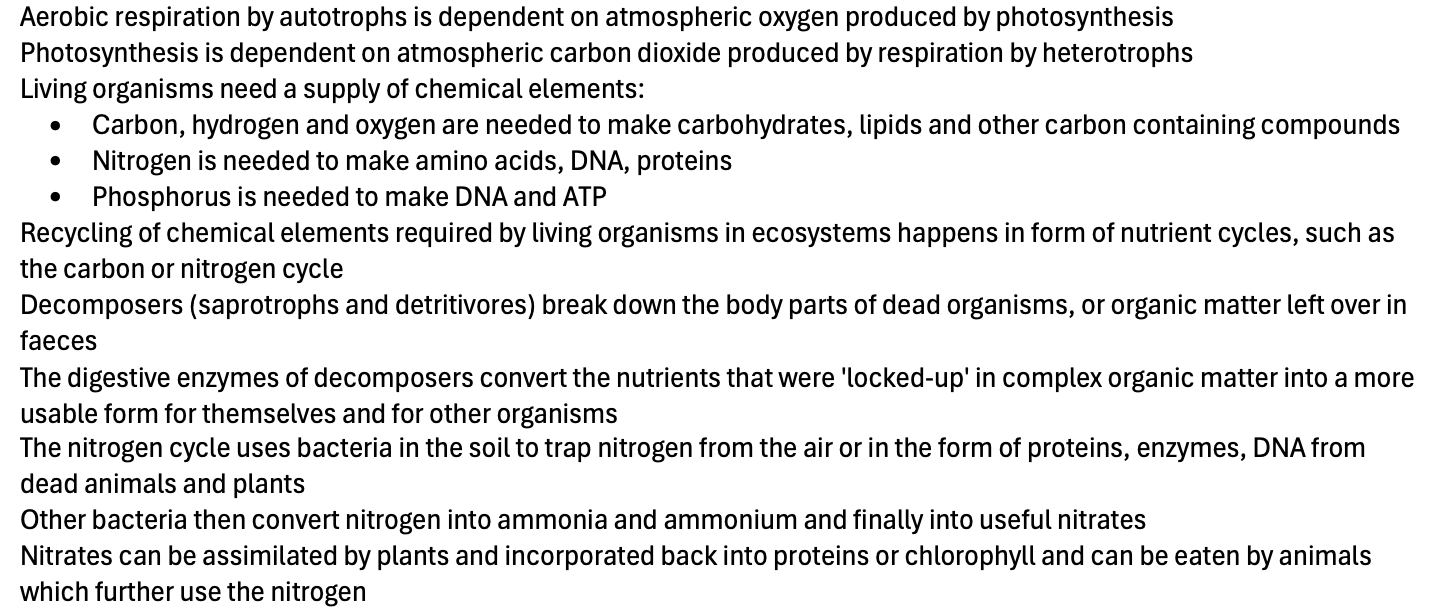Nutrient Cycling
Aerobic respiration by autotrophs is dependent on atmospheric oxygen produced by photosynthesis
Photosynthesis is dependent on atmospheric carbon dioxide produced by respiration by heterotrophs
Living organisms need a supply of chemical elements:
Carbon, hydrogen and oxygen are needed to make carbohydrates, lipids and other carbon containing compounds
Nitrogen is needed to make amino acids, DNA, proteins
Phosphorus is needed to make DNA and ATP
Recycling of chemical elements required by living organisms in ecosystems happens in form of nutrient cycles, such as the carbon or nitrogen cycle
Decomposers (saprotrophs and detritivores) break down the body parts of dead organisms, or organic matter left over in faeces
The digestive enzymes of decomposers convert the nutrients that were 'locked-up' in complex organic matter into a more usable form for themselves and for other organisms
The nitrogen cycle uses bacteria in the soil to trap nitrogen from the air or in the form of proteins, enzymes, DNA from dead animals and plants
Other bacteria then convert nitrogen into ammonia and ammonium and finally into useful nitrates
Nitrates can be assimilated by plants and incorporated back into proteins or chlorophyll and can be eaten by animals which further use the nitrogen
